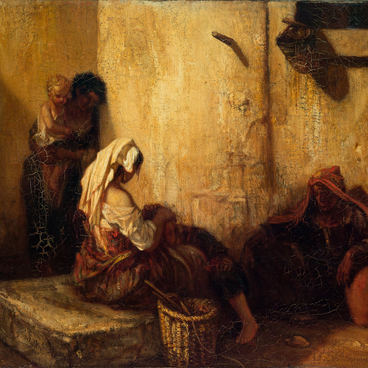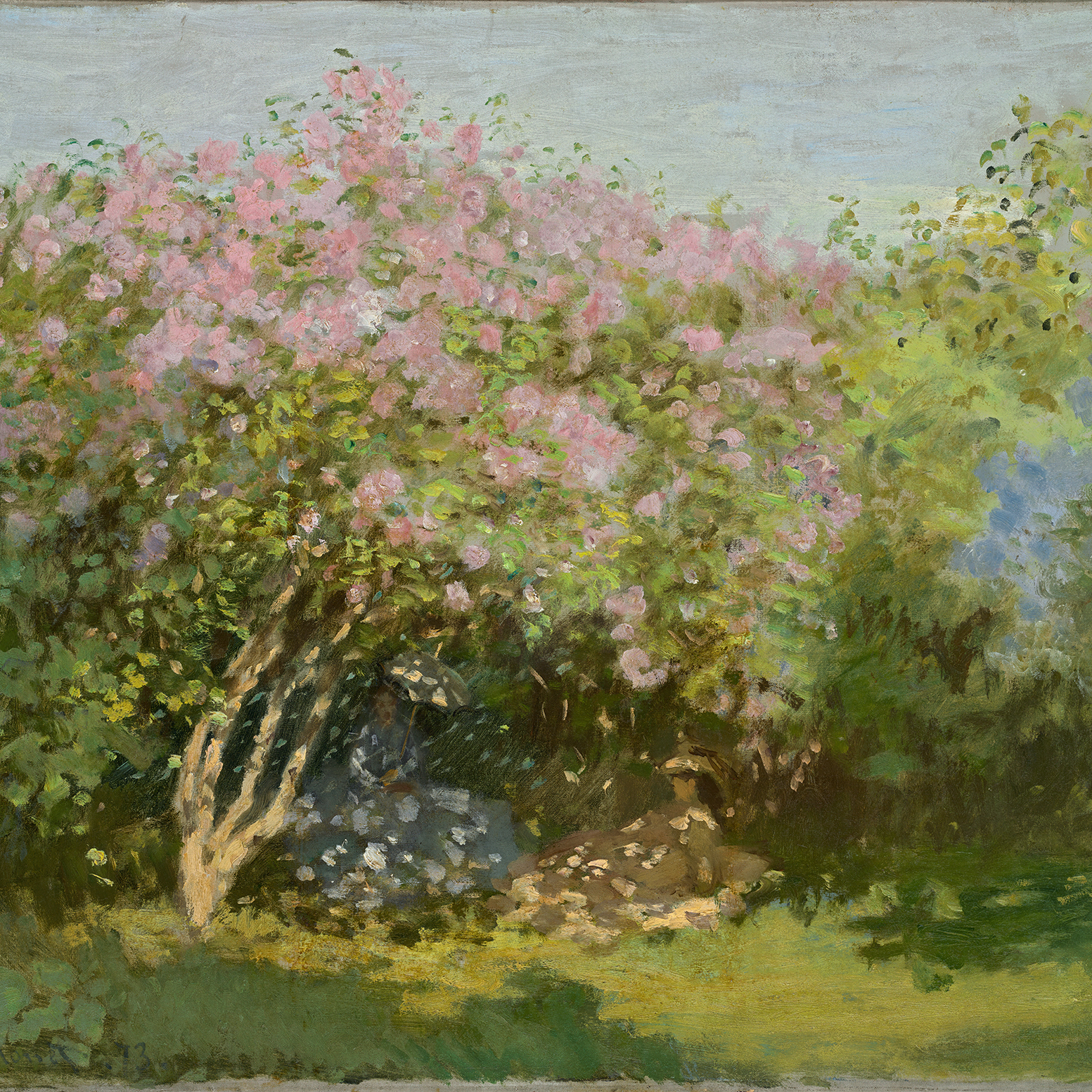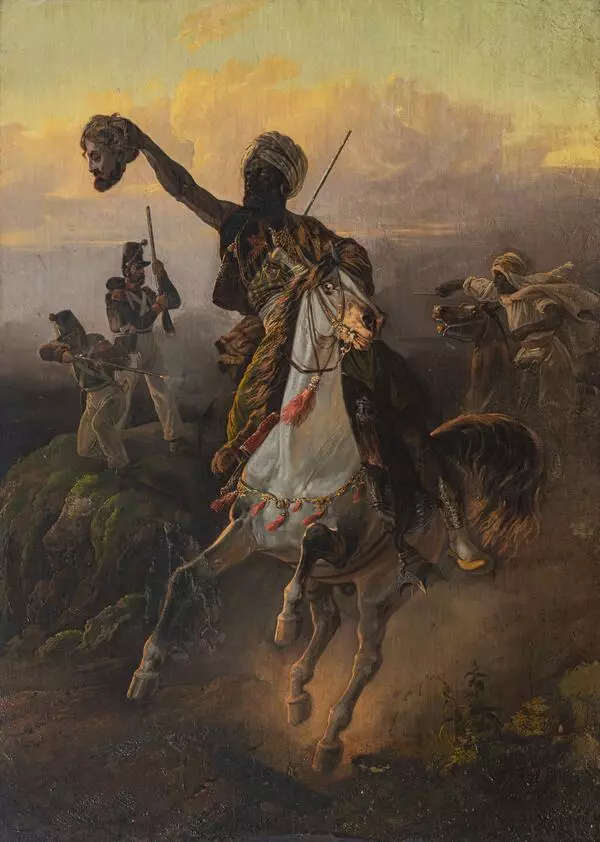Horace Vernet was a very famous French painter in the middle of the 19th century. He came from a well-known artistic family. His grandfather, Claude Joseph Vernet, was a famous landscape artist of the 18th century, and his father, Carle Vernet, was a renowned master of animal and battle genres, as well as a historiographer of Napoléon’s army. Horace Vernet was not only a brilliant artist, but he also served as a diplomat during the rule of Napoléon Bonaparte and the Bourbon Restoration. The painting “Mamluk” belongs to the series of works that was inspired by his travels to Egypt, Algeria, Palestine, and Turkey. It was created in the 1830s, when the Oriental theme fascinated the artist. Mamluks were personal guards of Arab caliphs. During the rule of Napoléon, a unit of mamluks dressed in Oriental costumes was integrated into the emperor’s guard. Paintings in this style were based on personal impressions and sketches made by the artist, but they were also in response to the trendy romantic craving for the exotic. This interest in Oriental themes was very typical of romanticists. The Orient attracted artists with its diversity of traditions, characters, customs, legends, bright and remarkable landscapes, and saturated colors. Horace Vernet constructed a dynamic composition showing the mamluk’s figure in a sudden turn. His expressive face and the agitation seen in the eye of his horse, barely controlled by the warrior, convey a battle atmosphere against the background of an Oriental landscape. Saturated bright colors strengthen the dramatic effect of the painting. This interpretation of the Oriental subject was quite characteristic of the age of romanticism.
Mamluk
Creation period
1930's
Dimensions
126x99 cm
126х99
126х99
Technique
oil on canvas
Collection
Exhibition
2
Open in app#3

Horace Vernet
Mamluk
#1
read morehide
00:00
00:00
1x
Mamluk
Creation period
1930's
Dimensions
126x99 cm
126х99
126х99
Technique
oil on canvas
Collection
Exhibition
2
Open in app
Share




